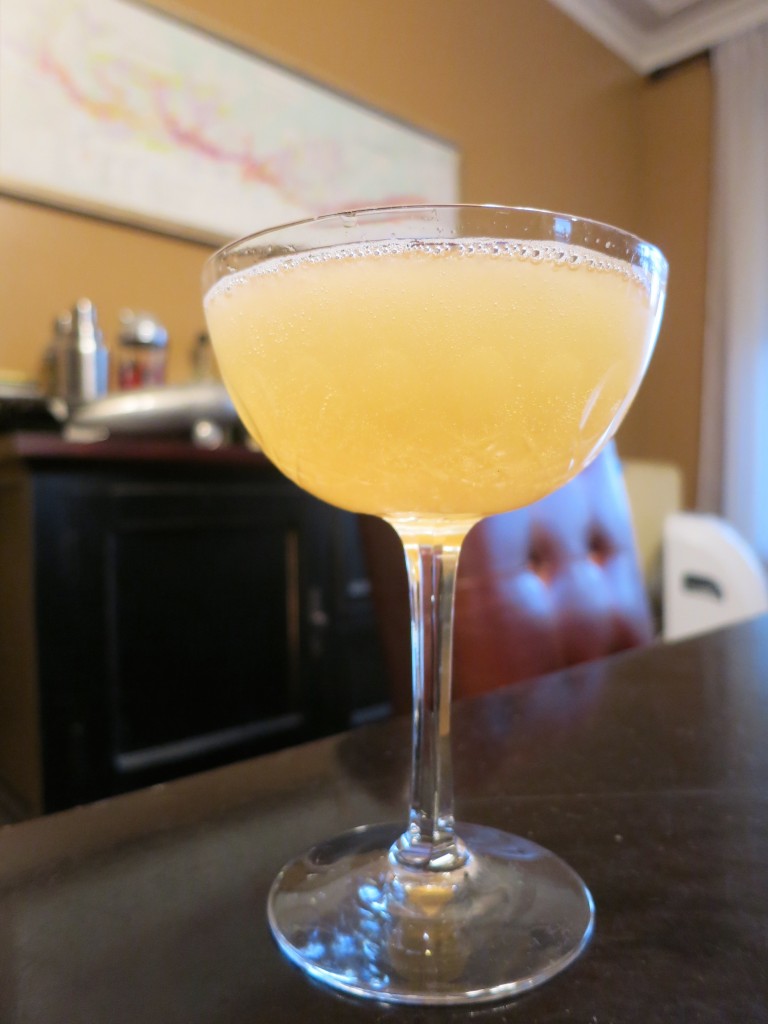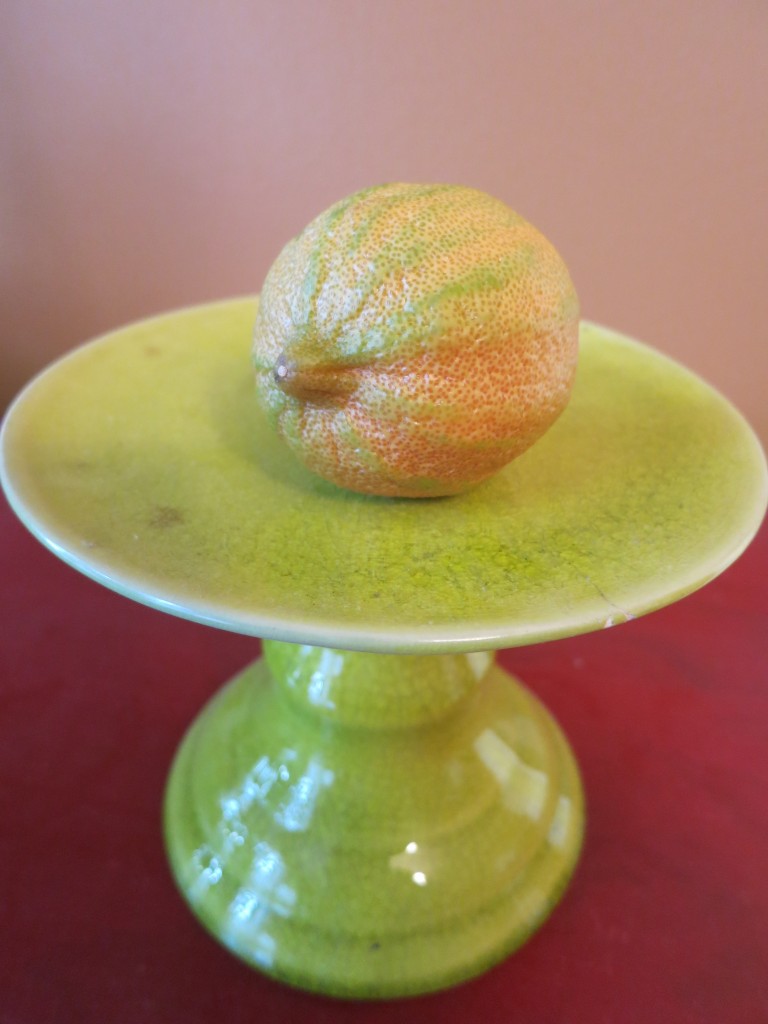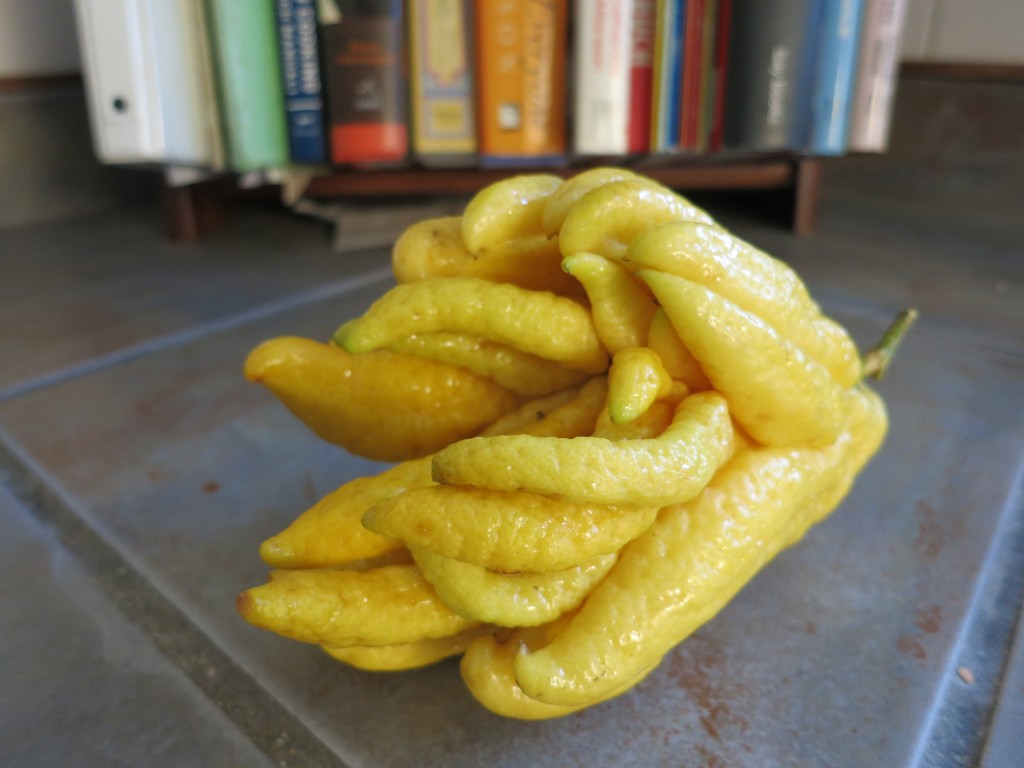Cocktails: The Season For Unusual Citrus
In Chicago, we’re slowly running out of seasonal produce to look forward to. We’re in the midst of kale, cabbage and carrots, and then there’s quite a dry spell until the first ramps of spring poke out their heads in April. Fortunately, this is also the season of citrus (well, somewhere it is), and all sorts of exciting tart fruits start appearing in grocery store produce departments. And citrus, of course, is a key ingredient in countless cocktails which can be made quite sexy and seasonal with an interesting citrus substitution.
The easiest “unusual” citrus to find tends to be blood oranges, which look either like small navel oranges or oranges rubbed with blush. The juice tends to be tart and delicious, and it turns any cocktail a gorgeous reddish color. I experimented with it a few years back and came up with some delicious drink recipes in this post.
But I must admit I don’t always have the energy to come up with exciting new cocktail recipes to showcase an unusual piece of citrus. When faced with an irresistible piece of fruit, but unwilling to devote the time and money necessary to come up with a fancy new recipe, the lazy mixologist in me turns to a simple and tasty classic: the daiquiri.
This restorative cocktail combines just three ingredients: rum, citrus (traditionally lime) and simple syrup (one part sugar dissolved in one part water). I like the ratio of two parts rum, one part citrus and a half part of simple syrup. The result is balanced, refreshing and boozy. Just how I like. Lime and rum work beautifully together, but other tart citrus fruits can work just as well.
 For example, at Whole Foods, I recently found a display of pink variegated lemons, and I certainly was not about to pass up the chance to work with them. I purchased a couple, juiced them and mixed up a daiquiri using five-year-old Ron Centenario from Costa Rica. (I ordinarily recommend using unaged rum in a daiquiri, but I was fresh out and impatient.) The resulting drink tasted sour and sweet, with a pleasant note of powdered candy.
For example, at Whole Foods, I recently found a display of pink variegated lemons, and I certainly was not about to pass up the chance to work with them. I purchased a couple, juiced them and mixed up a daiquiri using five-year-old Ron Centenario from Costa Rica. (I ordinarily recommend using unaged rum in a daiquiri, but I was fresh out and impatient.) The resulting drink tasted sour and sweet, with a pleasant note of powdered candy.
And every year at Whole Foods, there are about two weeks when Buddha’s hands appear. This citron looks like a little alien or sea creature, with several finger- or tentacle-like segments extending out from a central hub. These fruits have no juice to speak of — the interior is almost entirely pith — but the peel smells sensational. It has a wonderfully floral, perfumed character, and even just having a Buddha’s hand in the room can make it smell like sunshine.
The Buddha’s hand lack of juice doesn’t mean it can’t be used in a daiquiri, but it takes a little more effort. I zested about half of my Buddha’s hand (careful to avoid the pith) and muddled the peel with a cup of sugar, which helps release the fragrant oils in the rind. After letting it sit for a bit, I added a cup of water and heated the mixture on the stove, dissolving the sugar and extracting additional flavor from the zest. Once it cooled, I strained the mixture to remove the peel and stored the contents in a little jar in the refrigerator.
This Buddha’s hand simple syrup made for an exceptional lime daiquiri, adding a floral note to the tart citrus and round molasses sweetness of the rum. But the syrup doesn’t keep forever, as I learned to my chagrin, even in the fridge. Be sure to use it within a month or so.
Next, I’m looking forward to trying some daiquiris with Meyer lemons, which have both tasty juice and a fragrant peel. It’s hard to go wrong when you combine citrus of just about any kind with rum.
If you try making a cocktail with some unusual citrus, be sure to let us know how it goes in the comments section of this post. I’d love to see your recipes!







